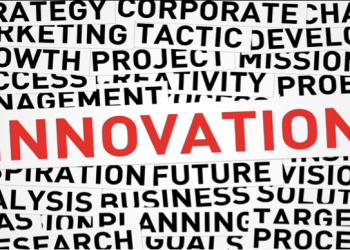Trust your favorite trends expert: When we think of innovation, images of cutting-edge devices, technologies, and inventions commonly spring to mind. But innovation is simply defined as “the introduction” of something new – and that something could be as simple as a new package, pricing strategy, or way of positioning our product or service. While it’s often a matter of strategy for leading organizations, it’s also just as frequently a matter of helping employees get a fresh sense of perspective.
To put things in context: FedEx, a business rooted in entrepreneurship and innovation, has a 40-person team charged with empowering its 330,000 employees to pursue game-changing innovations. But leaders tell this trends expert that the enterprise’s main challenge isn’t securing resources or management buy-in, even on this colossal scale. It’s inciting employees to speak up, take action, and routinely reconsider how they do business and create value for their customers, partners and the organization.
At its core, innovating, let alone achieving innovation on a sustainable basis, isn’t just about embracing ongoing learning and experimentation. It’s about institutionalizing a love of change in your organization. Successful enterprises don’t seek to avoid change. They know that great change will happen, and prepare themselves to greet it before it arrives.
Of course, even in the face of impending changes, not doing things differently may seem like a safe bet to some of us, especially the more successful we are – why fix things if they’re not broken? But if you’re sitting still as the market and competitive landscape constantly changes around you, you’re still playing the odds, and run an even greater risk of being left behind. Whatever choice we make, recognize that we are always gambling. You might as well know what you’re betting on.
In fact, the process of consistently experimenting and making educated gambles is central to the concept of sustainable innovation. If you study leading innovators, you’ll notice something interesting: They never stop innovating, and are always exploring an array of new business strategies and ventures.
That’s because staying ahead of the curve and making smarter decisions in disruptive environments is largely a process of controlled speculation: being risk-averse, not risk-free, if you will. It’s all about making controlled wagers. Poker pro and entrepreneur Phil Gordon tells me he calls this process selective aggression. You make small, probing bets until you’re sure you’ve got a winning hand – only then do you put any chips in the pot.
Essentially, as trends experts frequently observe, market leaders actively manage innovation the same way you’d manage a financial portfolio. Diversify. Monitor. Consistently readjust. This means playing multiple bets. Some will be high-risk, high reward. Some will be low-risk, low-return. Not all will pay off. But by pursing all, you help grow your organization’s learning and capabilities, and gain deeper insights into changing markets. The more feedback you get, the faster you can course-correct to be more successful going forward. This is how top companies sustain innovation, maintain competitive advantage – and consistently stay in tune with changing times and trends.
Put simply, innovation isn’t a one-time activity. It’s an ongoing series of learning experiences and course-corrections that help us become more adaptable, more resilient, and more future-proof over time.
GET YOUR FREE COPY NOW!
books
Limited-Time Offer: Download Free eBook THINK SMARTER Today!
No spam. We respect your privacy.














